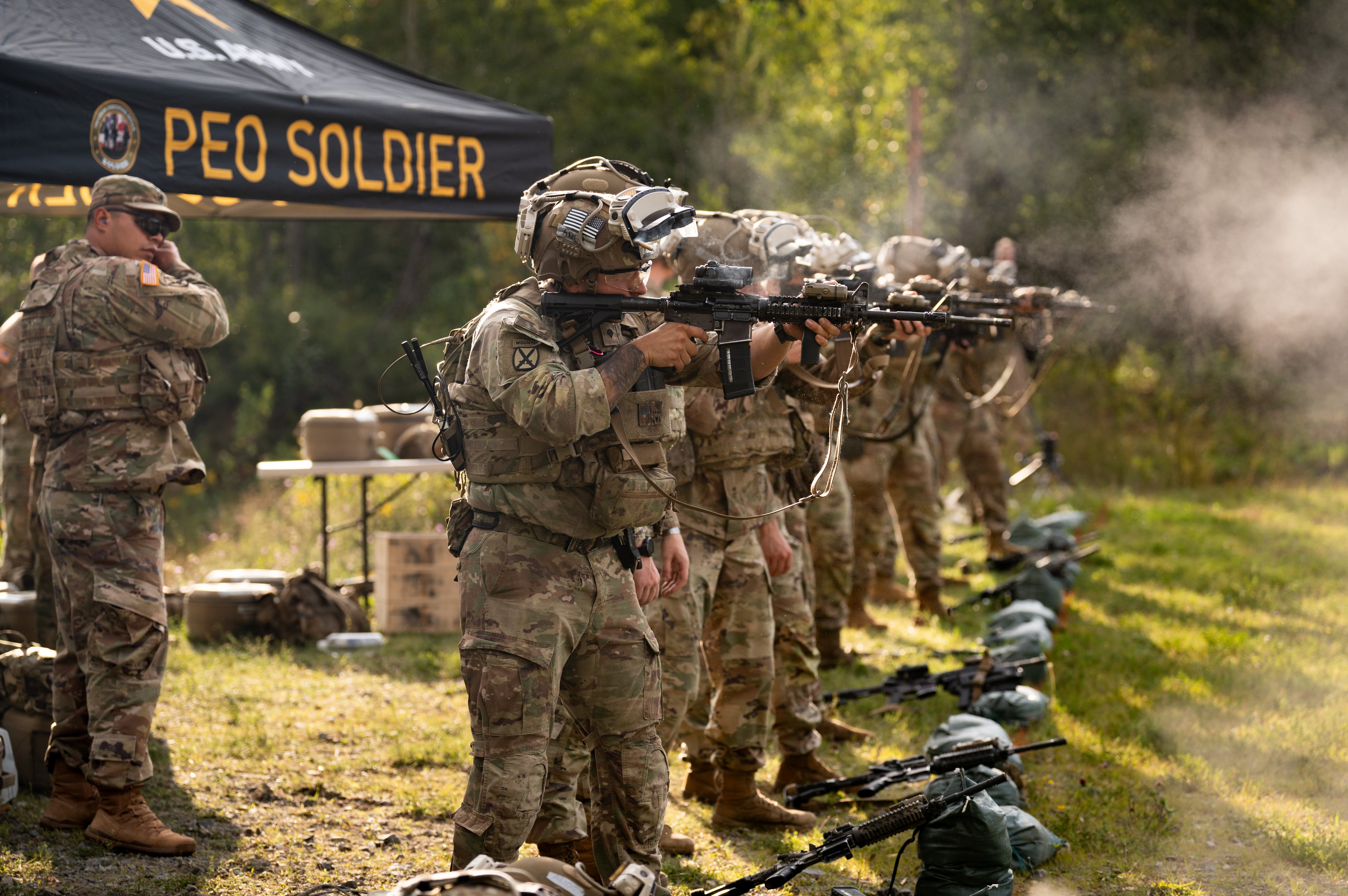The Army’s helmet-mounted, mixed reality device that merges information tools, night vision and thermal optics will see more design updates and a battalion-level assessment next year.
The Integrated Visual Augmentation System, or IVAS, is a $22 billion program on which the Army has worked closely with Microsoft since 2018. The military system was built on the commercially available Microsoft HoloLens device.
Maj. John Thomas, assistant program manager for IVAS Development at Program Executive Office-Soldier, told Army Times that as they work through the upcoming events, the next focus is on “extensibility” of the device.
RELATED

That entails using the capabilities of IVAS to control other devices, such as the soldier-borne sensor, a microdrone currently in use by soldiers.
The Army is working on the third of five prototypes of the device since the program began. The current version, IVAS 1.2, is the second engineering validation build, Thomas said. This includes some design changes that must be implemented in the next prototype as the service continues gathering troop feedback.
The following updates are in the works for IVAS 1.2:
- A low-light camera with increased sensitivity
- Improved low-light focus mechanism, especially when wearing gloves
- More robust bumpers, cables, bungees and tethered solar caps
- Hinge improvements for usability, display clarity and durability
- Improved transport case and mission bag for better storage and protection
- Minor visor and display improvements for greater clarity and durability
- Software improvements
As engineers work through those updates, soldiers with the 101st Airborne Division at Fort Campbell, Kentucky, are slated in January to run a user assessment.
But following that test will be the largest event so far with the device. Next spring, soldiers with the 4th Infantry Division, out of Fort Carson, Colorado, will conduct an operational demonstration, handing the IVAS to a battalion of soldiers for a field exercise.
For now, the Army has IVAS sets on loan to the Maneuver Center of Excellence at Fort Moore, Georgia, 10th Mountain Division at Fort Drum, New York, and III Corps headquarters at Fort Cavazos, Texas, officials said.

Once the IVAS 1.2 engineering changes are made and the Army completes the battalion operational assessment — and any additional testing — the service will be ready to award a production contract, officials said.
PEO Soldier and Microsoft have made significant changes to the device since the program’s inception.
The Army presented the early HoloLens-based iteration of IVAS in March 2019. That was followed by ruggedized, military versions through 2022.
The device transitioned from a helmet- or no-helmet goggle option, with a chest-mounted controller and thick cabling, to a helmet-mounted flip-up visor-like version. The controller also moved to the rib cage, opening more room on the user’s chest for other gear.
Developers reached the limits of what they could do with the analog night vision technology, built over 70 years of research and development.
Maj. Gen. Christopher Schneider, PEO Soldier commander, told Army Times that the legacy analog night vision had problems incorporating augmented reality, a key feature of how IVAS is expected to be used.
The development team fixed early problems with moisture in the device, dizziness reported by users and display glitches, officials said.
Todd South has written about crime, courts, government and the military for multiple publications since 2004 and was named a 2014 Pulitzer finalist for a co-written project on witness intimidation. Todd is a Marine veteran of the Iraq War.







